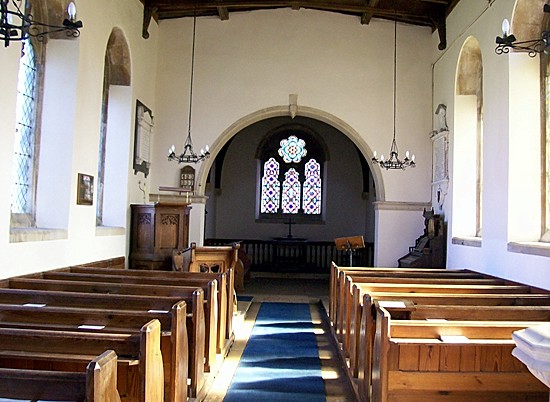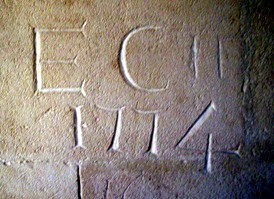|
Wilsthorpe

If you had travelled
to this village, four miles south of Bourne, on 16th June 1860, you might have been intending to watch the first train pull into Wilsthorpe station on a line built from Bourne to connect with the Great Northern at Essendine by a small independent company. This public transport facility has long gone the way of most railway tracks in the county and all that remains is the plain little station master's house, the inevitable tell-tale wooden fencing and an avenue of trees. Nearby is the pumping station house from the old Peterborough Waterworks with its 52 ft deep artesian well drilled during the late 19th century when it provided a million gallons of water each day to supply the cathedral city 14 miles away.
This village lies among flat meadows where willows mark the winding course of many waters, here crossed by little bridges while a mile away is King Street built by the Romans and many Roman coins have been unearthed hereabouts. It is now a target for residential development but not all of the new houses have been tastefully designed for such an isolated, rural location.
One of the smallest and most interesting churches in South Lincolnshire is St Faith's at Wilsthorpe. Unlike other Anglican churches in this part of the county, it was built as recently as the 18th century after an earlier one on this site was pulled down in 1715.
| It was originally a perfect example
of an early Georgian church but in 1863, the building was altered by
the diocesan architect James Fowler (1828-92), a man of high
Victorian values who tried to remodel the building in the English
mediaeval style but his work was not well received. The result is a strange mixture of classical and Gothic with a bell turret, a shingled broach spire and tiny balustraded gallery incorporated in the tower, a nave with eight big rounded windows and a dim chancel that gives sanctuary to a fine stone figure of a 13th century knight bearing a shield with the arms of the Wake family to which the famous Hereward is supposed to have belonged although its authenticity is in doubt because he wears a belt circa 1300 but has a moustache that was in vogue 75 years later. |
 |
Nevertheless, the church today is a charming building from all angles, especially from the south eastern aspect
from a corner of the secluded churchyard on an early day in spring. There is also some evidence of ancient vandalism because in the vestibule can be found the name of Richard Parkinson carefully carved by a visitor in 1759
while the walls in the porch contain several sets of initials and dates which
may have been put there by workmen during the 18th century.
|
 |
The old Victorian wall post box that
was installed on the side of a barn in the main street at Wilsthorpe in
1857 has now become a museum piece. This is a rare item of postal
history, a cast iron box made by Smith & Hawkes of Birmingham.
Villagers posted their letters and cards here during the 19th century
and they were collected once a day and sent by mail cart to Stamford for
onward transmission.
When the barn was demolished as part of a
residential development in the late 20th century, it was sold for scrap.
The buyer was Mr Bert Johns who snapped it up for £30 on 6th June 1978
and erected it in the back garden of his home at No 47 Stanley Street,
Bourne, in a pillar made from Victorian bricks which he managed to find
to give it a setting in keeping with the period for which it was
intended. |
|
ASPECTS OF WILSTHORPE CHURCH |
|
 |
|
 |
 |
|
 |
|
 |
|
FROM THE ARCHIVES
Olde Nut, of Baston, drowned by mischance, buried 7th
June 1615. - from the Wilsthorpe General Register, dated 1615. |

Go to:
Main Index Villages
Index
|









